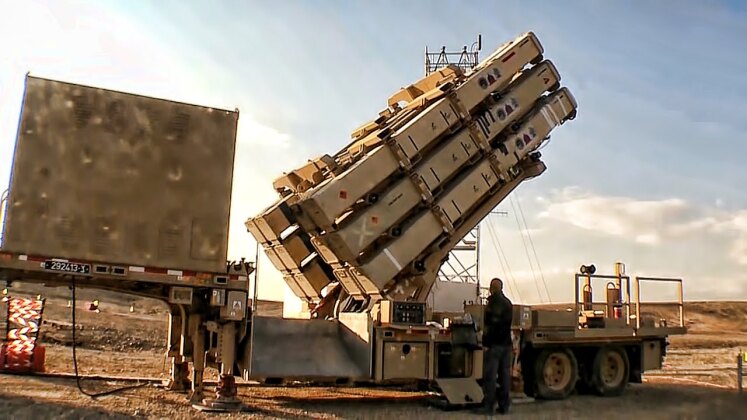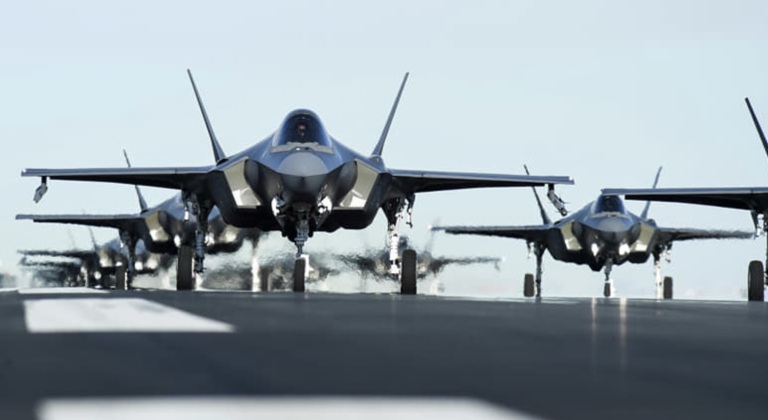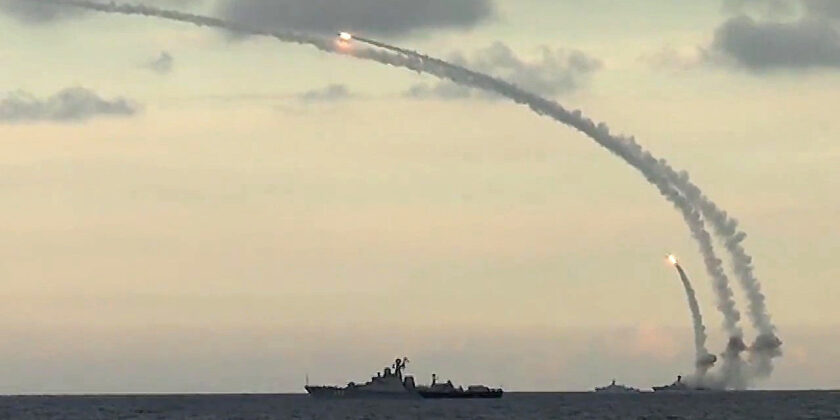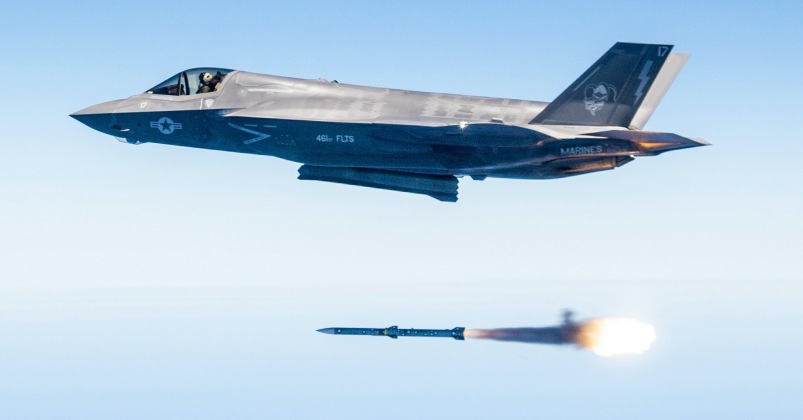News
David’s Sling Missile Systems and F-35 Stealth Fighters: An Ideal Pairing to Guard Finland’s Long Russian Border
On April 7 the Israeli Defence Ministry confirmed that it had received a request to acquire the David’s Sling missile system, which is widely considered the world’s most capable long range multirole air defence platform that is NATO compatible and is expected to revolutionise the country’s aerial warfare capabilities on its long border with Russia. The ministry reported: “The Defence Ministry is expected to carry out its first foreign delivery of the David’s Sling weapons system. After the selection process that took a few years, the Defence Ministry of Finland has chosen the advanced Israeli system. The request for purchase was received by Director General of the Ministry of Defence Eyal Zamir. In accordance with the agreement, Israel will supply the David’s Sling weapons system to Finland, including interceptors, launchers and radars, which will be integrated into Finland’s command and control systems.” It added that the agreement “is estimated to be worth 316 million euro”, and “will require an export permission from the U.S. government” due to the extensive American support provided to the development effort.

Reports of Finnish plans to acquire the David’s Sling came only 48 hours after the country formally acceded to NATO becoming the alliance’s 31st member, with its membership effectively doubling the bloc’s borders with Russia. The Finnish presidency summarised the shift in the country’s geopolitical position as follows: “Finland has today become a member of the defence alliance NATO. The era of military non-alignment in our history has come to an end. A new era begins.” Accession was preceded by the placing of an order in December 2021 for 64 F-35 fifth generation fighters from the United States, with the David’s Sling potentially providing a highly effective complement to the fighters. The high maintenance F-35s spend considerable time at airfields due to notoriously low availability rates, with the David’s Sling potentially providing key protection to airbases in the likely event that Russia should seek to destroy the fighters on the ground using assets such as Iskander and Kinzhal ballistic missiles.
Russia notably lacks a meaningful fifth generation fighter capability of its own, and its strategy for dealing with NATO’s growing stealth fleet has oriented heavily around using ground based assets to tackle them. The F-35 is one of just two fifth generation fighters in the world both in production and fielded at squadron level strength, alongside the Chinese J-20, which has consistently led air forces across NATO to favour it in tenders over similarly priced competitors from the fourth generation such as the Eurofighter, Rafale and F-18E/F. The fighter is still very far from ready for high intensity combat, with a troublesome engine and close to 800 performance bugs among multiple other issues, but should these issues be resolved near the end of the decade its offensive potential would have few rivals.

The David’s Sling was jointly developed by America’s Raytheon and Israel’s Rafael, and as a clean sheet new design it integrates some of the most sophisticated Western air defence technologies available significantly outperforming the PAC-3 Patriot dating back to the 1980s which is currently deployed by American and allied forces. The David’s Sling was developed as a replacement and successor to the Patriot, with the highly questionable performance of the older system potentially making the newer Israeli one highly popular across NATO. A notable feature is its Stunner missiles’ use of dual-mode terminal homing – meaning that each missile deploys two seekers one using an active electronically scanned array radar and the other using imaging infra red. Either seeker can guide the missile towards its target, and using both significantly reduces chances for targets to decoy or jam its missiles on approach. Miniaturised subsystems including a data link fully networked with ground based sensors, a compact and powerful engine providing very high manoeuvrability, and a design built around a ‘hit to kill’ system allowing the munition to function without a warhead, are other notable features of the system. Although highly costly, the David’s Sling was considered a priority for development for Israel due to the country’s perception that ballistic and cruise missile attacks were the greatest threats it faced – as the conventional forces of its potential adversaries have been relatively limited since the Cold War ended. This also applies very much to NATO, with post Soviet Russia relying heavily on mobile missile systems, albeit ones far more sophisticated than those fielded in the Middle East, to compensate for conventional disadvantages which it would face in a war with the Western Bloc.

In a missile defence role the David’s Sling could also benefit considerably from networking with F-35s, particularly as future production blocs are set to integrate a new generation of AN/APG-85 radars which are expected to provide much higher levels of situational awareness. The F-35 made a landmark test in transmitting targeting data back to missile defences in August 2019, and it has since increasingly been predicted that this could make it an optimal complement to systems like the David’s Sling. Alongside the F-35’s powerful sensors and cutting edge network centric warfare capabilities, the fighter’s strong orientation towards offence with advanced stealth capabilities and powerful electronic warfare suites makes it an effective complement to the very defensively oriented Israeli missile system. Assigning the David’s Sling air defence duties could thus potentially free more F-35s for offensive roles into Russian airspace rather than forcing them to serve as interceptors in Finnish airspace.

Unlike the rival Patriot and THAAD systems, the David’s Sling has not seen its reliability put to serious question by both testing and combat failures. Its munitions have however notably been captured in Syria intact and sent to Russia for testing raising questions regarding whether Russian countermeasures developed using the information acquired could render the system ineffective. The David’s Sling notably also lacks the capability to intercept hypersonic missiles, with its viability against missiles using semi ballistic depressed trajectories like the Iskander also remaining in serious question. With a 250km operational range, the system can cover similar areas to Russian systems like the S-300PM-2, although it is still far outranged by the S-400 at 400km or the S-500 at 600km reflecting Russia’s strong focus on enhancing its own ground based air defence capabilities over the past 25 years. The system also lacks a comparable multi layered defence capability to it Russian counterparts like the S-400, which can fire over half a dozen different missile classes optimised to engaging different targets at different ranges, meaning shorter ranged systems will need to be acquired by Finland to protect the David’s Sling particularly from saturation attacks.












